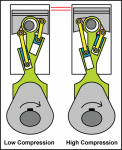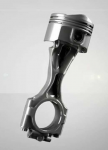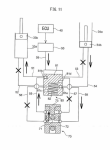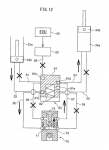JasonS
Well-known member
- 1,665
- 195
- 63
- Location
- Eastern SD
Continental developed a 350HP engine based on the 478 cubic inch "multifuel" engine.
Some interesting features other than the power output:
Some interesting features other than the power output:
- Variable compression ratio: a high of 17:1 and a low of 10:1
- The BSFC was 0.380 lb/ hp*hr which is actually better than the LDS engine
- Still using the American Bosch PSB injection pump
- Aftercooler built into the intake
- Aluminum heads, oil filter housing, and rocker covers
Attachments
-
11.1 MB Views: 56






